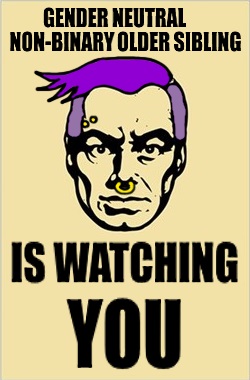
|
Suppressing HumourAspects of humour, especially the mechanisms in operation when certain topics are forbiddenSIMON SHEPPARD |
Aspects of Humour
The terse comment at the bottom of the ‘ESS Bandits’ page certainly warrants further elaboration. Humour is a hugely significant sphere of human interaction and analysis now is especially pertinent, as an increasing number of topics are being prohibited. Gone are the days in Britain when we could "joke about anything." Here is an opportunity to examine the functions of humour and the motives for suppressing it.
It would be interesting to analyse the many different types of jokes, and no doubt this is an active field in psychology. From a non-specialist viewpoint, jokes often seem to resolve in an unexpected twist or the sudden revelation of a truth which is generally unacknowledged. I would posit that male humour exhibits an extensive variety of joke templates, which of course makes it a fascinating subject for study. It may be impossible to completely catalogue all the various types of jokes.
Another intruiging aspect is, where do jokes come from? Some people have an exhaustive catalogue of jokes, but they don't originate them. Who, exactly, are the originators?
It is said that during our evolutionary history, the female had little need for comedic ability. Her charms were, and to large extent still are, her body and her looks. Conversely the male with the ability to charm a female with amusing repartee had an evolutionary advantage; he was more likely to pass on his genes. This accounts for commonplace "male banter" and the dearth of good female comedians.
Female humour is much more limited and seems to revolve around two dominating themes:
- Generating endearment;
- Mocking opponents.
A female stand-up comedian will make light of her epic battle with a supermarket trolley, or her child-like ineptitude in another familiar situation. It is obvious that the original impetus being exaggerated is stimulating endearment, thus to invoke caretaking instincts. Amusingly as it may be presented, this is a frequent underlying theme. Jewish comics seem to draw deeply from a well of neurosis and excel at self-deprecation.
The second major template involves mocking opponents, which are usually masculine in character. These jokes always have a target.
Nowadays humorous pranks and comments can provoke a torrent of outrage. That the incident was inane and completely without malice is immaterial. The clamour is triggered by some statement, sign, word or gesture which has been deemed prohibited. First the taboo is defined by the media, then it is taken up by the impressionable.
The obvious goal of the outrage is to increase the cost of raising that particular topic. An emotional response is conditioned which discourages rational debate. However a deeper and perhaps more important purpose of inhibiting humour is to increase societal neurosis, particularly in males. This will help us understand why such a fuss is made about what, in reality, are trivial events. Females equate 'What is said' with 'What is done' and most of the time the fuss is over mere words, and sometimes not even that.
The role of humour is to release neurotic tension and distribute information. The female (in all her forms) seeks to increase the neurotic load of males, because neurotic and confused males are easier to manipulate. This is the underlying purpose of suppressing humour. It raises the level of collective neurosis, especially in males. Any female who voices an objection is contributing to feminist consolidation.
Recall that neurosis (after Pavlov) is when one stimulus evokes two or more responses. The conflict could be between alluding to the truth, a laudible, positive instinct, and fear of the costs of broaching what is now a forbidden topic. The list of subjects which cannot be joked about will grow indefinitely, because humour undermines female power. In the absence of a counter-mechanism, the scope of the prohibitions will only increase.

